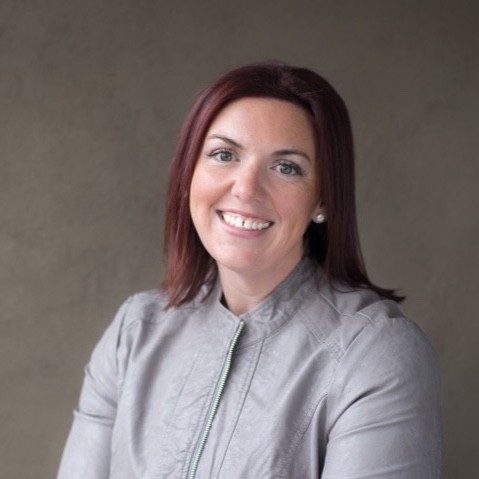Running a Adult Family Home/AFH (4-20beds) is more than just providing care—it’s about creating a community that families trust and residents love. While names vary across states, such as RCFE or RAL, this guide applies to them all, offering strategies to help your facility thrive in a competitive landscape.
To help us dive deeper into this topic, Claud Covaci, CEO of Synkwise spoke with Sara Scheetz, owner of Senior Living Locator, a placement agency in Vancouver, Washington. With years of experience in the long-term care industry and a passion for helping families find the right fit for their loved ones, Sara brings valuable insights into effective marketing strategies for smaller residential care homes.
Drawing from Sara’s expertise, we’ll share practical strategies that can help improve your outreach, fill your beds, and ensure your adult family home stands out from the competition.
1. Build a Strong Online Presence
Most potential residents and their families start their search online. If your facility doesn’t have a strong digital presence, you’re missing out on reaching families who may need your services. Here’s how to make sure your facility is easy to find:
Update Your Website:
Your website is often the first impression people have of your AFH. Make it modern, easy to navigate, and mobile-friendly. Highlight your services, care options, and staff expertise with high-quality images and testimonials. As Sara emphasizes, “Families are more educated now and want to see a website link.” Even a basic website can make a difference, especially when potential residents want to compare options before scheduling a visit.
Leverage Free Resources:
Use Google My Business to ensure your facility appears in local search results, and create a Facebook page to share updates. “Utilizing the free things that are already out there, especially when you’re new, is super important,” Sara advises. These tools can help establish your online presence without breaking the bank.
Search Engine Optimization (SEO):
Optimize your website for local searches, such as “Adult Family Homes in [city].” SEO ensures that your facility ranks higher in search results, reaching families searching for specific services. Tools like Google Keyword Planner can help you identify the search terms your target audience is using.
2. Use Social Media to Build Relationships
Social media isn’t just for big brands; it’s a valuable tool for smaller facilities too. It’s where families, caregivers, and potential residents spend their time. Your strategy should showcase the life and warmth of your facility.
Share Resident Stories and Activities:
Posting photos and videos of residents enjoying activities can humanize your brand and show the vibrancy of life at your AFH. Sara points out, “Don’t be afraid to show off what you’re doing. If you have a Super Bowl party, take a picture of the snacks and decorations.” Even if you’re not comfortable featuring residents directly, share images of events and setups to demonstrate that there’s always something happening.
Engage With Your Audience:
Respond to comments and messages promptly. By actively participating in conversations, you show that you value your community’s input. This personal touch builds trust and reinforces your commitment to providing exceptional care.
3. Leverage Reviews and Testimonials
Word-of-mouth remains incredibly powerful in the assisted living space. Families want to hear from others who’ve had positive experiences with your home.
Encourage Reviews:
Sara emphasizes the importance of reviews, stating, “There’s no better marketing tool than word of mouth.” Encourage residents and families to leave reviews on platforms like Google, Yelp, and Facebook. A collection of positive reviews provides social proof and helps potential residents see the quality of your AFH.
Use Testimonials Strategically:
Feature testimonials prominently on your website and marketing materials. Real-life stories from satisfied families can help build trust with prospective residents. Keep testimonials updated to ensure they remain relevant and impactful.
4. Offer Virtual and In-Person Tours
A strong marketing strategy includes giving potential residents and families a firsthand look at your home. In today’s world, offering both virtual and in-person tours is crucial.
Virtual Tours:
Create high-quality virtual tours showcasing common areas, resident rooms, and activity spaces. “Show that there’s life going on,” says Sara. Highlight the vibrancy of your facility. Virtual tours allow families to get a feel for your facility without needing to visit in person.
In-Person Tours:
Make this experience personal. Have a friendly staff member guide the tour, answer questions, and showcase what makes your facility feel like home. “Highlight your unique features,” Sara advises. Let families see what sets you apart from other options.
5. Community Involvement & Networking
Building trust means being an active part of your community. Positioning your home as a hub shows that you care beyond your walls.
Host Events and Open Houses:
Organize family days, health workshops, or open house events. This allows potential residents and their families to experience your adult family home in a warm, non-salesy environment. Think of these events as planting seeds for future admissions.
Educating Families on Quality Standards:
Establishing trust with potential residents and their families starts with transparency about your home’s quality standards. As Sara noted, “There’s a misconception that adult family homes aren’t as regulated as larger communities, but they are, with annual inspections and high standards.” Educating families about these rigorous requirements can help dispel doubts and highlight the high level of care your facility provides. Making sure families understand the regulations you adhere to reinforces your commitment to quality and sets your home apart as a trusted choice in senior care.
6. Utilize Email Marketing
Email marketing is a powerful tool for staying connected with potential residents and their families.
Highlight Updates and Events:
Use newsletters to share information about upcoming events, new services, or improvements in your facility. Being transparent and sharing what’s happening helps families feel more connected to your home.
Provide Valuable Content:
Share helpful articles, tips, or resources related to eldercare. “Knowledge is power,” Sara says, and using email marketing to educate your audience will build trust.
7. Focus on Your Unique Selling Points (USPs)
Identify what sets your home apart in a crowded market. Is it a specialized care program, a higher staff-to-resident ratio, or a home-like environment?
Create Differentiators:
Highlight your niche in your marketing materials and while working with referral agents. “If you have a specialty—like hospice or memory care—make sure everyone knows,” Sara suggests. Whether it’s offering personalized activities or unique therapies, make it a core part of your messaging.
8. Work With Placement Agents
Placement agents can be invaluable partners for adult family homes. They help families navigate the long-term care world, making it easier to find the right fit.
Embrace Transparency:
Working with placement agents who prioritize the best interests of the residents can build trust. As Sara shared, “I’m a flat rate placement agent versus a percentage-based one, which gives families confidence in my recommendations.” Find a reliable placement agent you can trust and will help you keep your beds full.
Prepare for Multiple Moves if Necessary:
While families often desire a one-and-done solution, Sara advises that it’s crucial to be transparent about the potential need for a secondary move if circumstances change. As a result, setting realistic expectations will helps families feel prepared but also ensures they’re equipped for any future adjustments, particularly in assisted living.
Conclusion: Make Your Marketing Work for You
With the right marketing strategy, your adult family home can thrive by attracting new residents and building trust. As Sara shared, “The right fit goes beyond just meeting care needs; it’s about finding where residents will truly thrive.” Emphasizing the quality of life at your home and helping families make informed decisions will set you apart from the competition.
Embrace these strategies to take control of your marketing efforts and create meaningful connections. By using online tools, engaging authentically with your community, and highlighting what sets your AFH apart, you can build a strong reputation that attracts the right residents. When you focus on building trust, you not only fill beds, but also establish a lasting reputation as a place where people genuinely want to be.

“There’s a misconception that adult family homes aren’t as regulated as larger communities, but they are, with annual inspections and high standards.”
Sara Scheetz, Owner and Placement Expert of Senior Living Locator.
Sara has over 18 years experience in Long Term Care including the inception and operation of an in-home care agency and is certified in Adult Family Home Administration. She is the co-founder of A Caring Closet, a local nonprofit that provides medical equipment to seniors for free. Sarah has been recognized as one of the Washington State University Women of Distinction and the Vancouver Business Journals Accomplished and Under 40 and was the recipient of the Metropolitan Senior Network Care Award. She serves on the Caring Closet Board of Directors and the Hope Dementia Support Group Advisory Board. Sara grew up in Vancouver and is passionate about her community.


